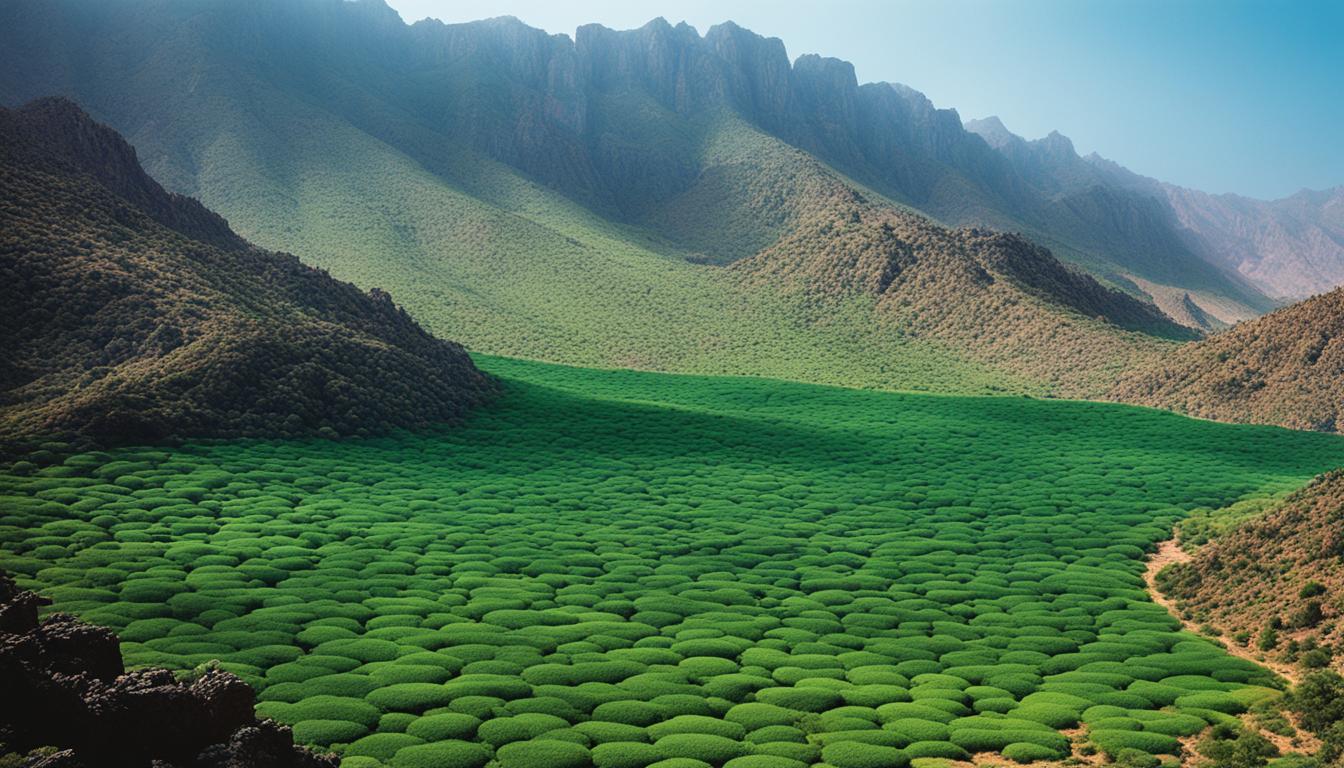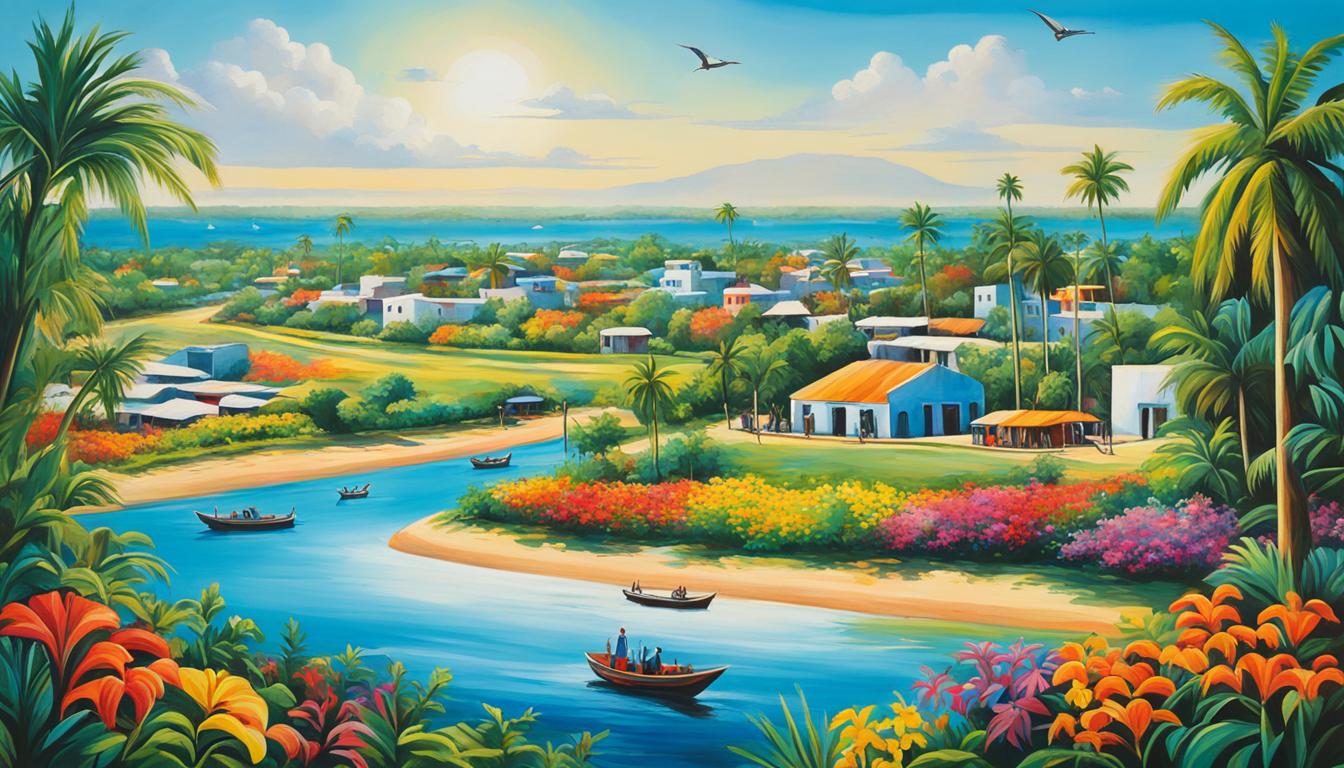Vietnam Biodiversity: Animal and Plant Species and What Is Under Threat
Did you know that Vietnam is ranked as the sixteenth most biologically diverse country in the world? With its vast range of natural environments, including forests, waterways, and marine areas, Vietnam is a biodiversity hotspot, home to a staggering array of flora and fauna.
With an estimated 12,000 species of plants, 276 species of mammals, 828 species of birds, 180 species of reptiles, 80 species of amphibians, 472 species of freshwater fish, and thousands of invertebrate species, Vietnam’s ecological diversity is truly remarkable. However, this biodiversity is facing significant threats that put many species at risk.
Key Takeaways:
- Vietnam is the sixteenth most biologically diverse country in the world.
- The country is home to an estimated 12,000 species of plants and hundreds of species of mammals, birds, reptiles, amphibians, fish, and invertebrates.
- Vietnam’s biodiversity is under threat due to factors such as deforestation, habitat loss, over-hunting, and the illegal wildlife trade.
- Conservation efforts are being made to protect Vietnam’s natural heritage and preserve its species richness.
- Preserving Vietnam’s biodiversity is crucial for maintaining ecological balance and supporting sustainable livelihoods.
Threats to Vietnam’s Biodiversity
Vietnam’s biodiversity faces numerous threats driven by human activities, jeopardizing the survival of its unique flora and fauna. One of the primary threats is habitat loss, particularly through deforestation. Over the years, Vietnam’s forests have experienced alarming depletion, with forest cover decreasing from 67% to 29% between 1943 and 1991.
The northern mountains of Vietnam have been particularly affected, witnessing forest cover drop from 95% to 17% in just 48 years. This rapid and extensive habitat loss has resulted in the fragmentation and degradation of remaining forests, consequently endangering many species.
Another significant threat to Vietnam’s biodiversity is over-hunting, driven by unsustainable practices and increasing demand for wildlife products. This has led to population declines and even extinction of numerous species, disrupting the delicate ecosystems.
“The illegal wildlife trade also poses a significant threat to Vietnam’s biodiversity, driving the exploitation and trafficking of endangered species. Such acts not only impact the wildlife populations but also disrupt the ecological balance and damage the country’s natural heritage,” said Dr. Nguyen Hai Van, a leading conservation biologist in Vietnam.
To combat these threats, urgent conservation measures are needed to address habitat loss, regulate hunting practices, and crack down on illegal wildlife trade. Integrated efforts between governments, conservation organizations, and local communities are essential to protect and preserve Vietnam’s rich biodiversity for future generations.
Root Causes of Biodiversity Loss in Vietnam
The root causes of biodiversity loss in Vietnam are multifaceted and influenced by various social and economic factors. The direct or proximate causes of biodiversity loss, such as deforestation, agricultural encroachment, fuelwood collection, hunting, and logging, are driven by human activities. Behind these immediate causes, there are often underlying root causes fueled by socioeconomic factors at different scales.
For example, timber exports have contributed to deforestation in Vietnam. International demand for endangered species drives the illegal wildlife trade, which further threatens biodiversity. Planned migrations and land-use changes driven by socioeconomic factors also impact Vietnam’s ecosystems.
“Timber exports have contributed to deforestation in Vietnam. International demand for endangered species drives the illegal wildlife trade, which further threatens biodiversity. Planned migrations and land-use changes driven by socioeconomic factors also impact Vietnam’s ecosystems.”
These underlying factors, which are often overlooked in discussions on biodiversity loss, play a significant role in the overall decline of species in Vietnam. Assessing and addressing these socioeconomic factors is crucial for effective conservation strategies.
Evaluating the Socioeconomic Factors Affecting Biodiversity Loss
Understanding the socioeconomic factors driving biodiversity loss in Vietnam is essential for developing targeted conservation measures. By evaluating these factors, conservationists can identify the root causes and implement effective solutions. Socioeconomic studies can shed light on the economic incentives and social dynamics that contribute to habitat destruction, over-hunting, and the illegal wildlife trade.
Evaluating the impact of timber exports, international demand for endangered species, and planned migrations can provide valuable insights into the underlying forces behind biodiversity loss. This knowledge can inform policy-making, conservation planning, and efforts to mitigate the negative impacts on Vietnam’s biodiversity.
Addressing Socioeconomic Factors to Protect Biodiversity
To address the root causes of biodiversity loss in Vietnam, it is crucial to tackle the socioeconomic factors that drive destructive activities. This requires a multi-faceted approach that involves collaboration between government agencies, local communities, and international organizations.
- Implementing stricter regulations and enforcement measures to combat illegal logging and the illegal wildlife trade.
- Promoting sustainable land-use practices and responsible resource extraction to reduce deforestation and habitat loss.
- Supporting alternative livelihoods for communities dependent on activities that harm biodiversity, such as providing training and resources for sustainable agriculture or eco-tourism.
- Enhancing public awareness and education to foster a sense of environmental stewardship and encourage responsible consumer choices.
By addressing the socioeconomic factors affecting biodiversity loss in Vietnam, it is possible to achieve a more sustainable balance between human development and environmental conservation.
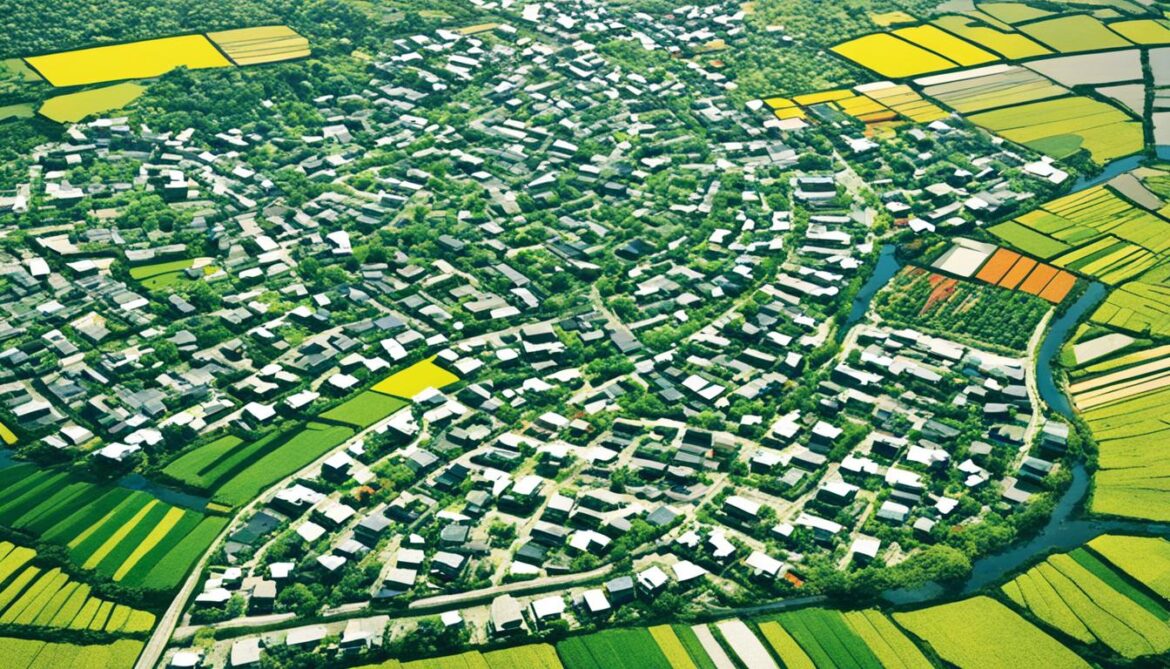
Vietnam’s Unique Biodiversity
Vietnam boasts an extraordinary and unique biodiversity, with a significant number of species found nowhere else in the world. This Southeast Asian country is home to a remarkable variety of plant and animal life that has evolved in its distinct ecosystems. In fact, Northern Vietnam alone is estimated to have around 33% of endemic flora, and at a national level, the percentage could be as high as 50%.
Vietnam’s rich biodiversity has also resulted in the discovery of several new mammal species in recent years. Let’s take a closer look at three remarkable additions to Vietnam’s mammalian fauna:
The Truong Son Muntjac
One of Vietnam’s new mammal discoveries is the Truong Son Muntjac (Muntiacus truongsonensis), a small deer species found in the Truong Son mountain range of central Vietnam. This elusive and endangered mammal has captured the attention of researchers and conservationists due to its unique characteristics and limited geographic range.
The Saola
The Saola (Pseudoryx nghetinhensis) is another incredible mammal discovered in Vietnam. Also known as the Asian unicorn, this critically endangered species was first identified in the Annamite Range of Vietnam and Laos. With its distinctive appearance and rarity, the Saola has become an emblem of Vietnam’s endemic wildlife.
The Giant Muntjac
The Giant Muntjac (Muntiacus vuquangensis) is a large deer species that inhabits the forests of the Annamite Mountains in Vietnam and Laos. This newly described mammal has captured the attention of scientists due to its size and notable features, distinguishing it from other muntjac species. The discovery of the Giant Muntjac underscores the importance of preserving Vietnam’s unique ecosystems to safeguard such extraordinary wildlife.
These remarkable discoveries highlight the significance of Vietnam’s unique biodiversity and the need for further exploration and scientific advancements to unearth more hidden treasures within its diverse ecosystems.
| New Mammal Species | Scientific Name | Habitat | Status |
|---|---|---|---|
| Truong Son Muntjac | Muntiacus truongsonensis | Truong Son mountain range, central Vietnam | Endangered |
| Saola | Pseudoryx nghetinhensis | Annamite Range, Vietnam and Laos | Critically Endangered |
| Giant Muntjac | Muntiacus vuquangensis | Annamite Mountains, Vietnam and Laos | Not yet classified |

Impacts of Biodiversity Loss in Vietnam
The loss of biodiversity in Vietnam has serious ecological consequences and threatens the survival of numerous species. Several fauna species have already become locally extinct, including the Sumatran rhinoceros, sika deer, Eld’s deer, kouprey, wild buffalo, Edwards’ pheasant, and possibly the Malayan tapir. Urgent conservation action is needed to prevent the extinction of other species, such as the banting, Javan rhinoceros, tiger, Asian elephant, and saola. Many endemic mammals, birds, amphibians, and reptiles are currently listed as endangered species.
The decline in biodiversity also has far-reaching effects on ecosystem functioning and services, leading to disruptions in the delicate balance of Vietnam’s natural environment. These impacts can have cascading effects on the overall health of ecosystems, affecting everything from pollination and nutrient cycling to water filtration and climate regulation.
The table below highlights some of the key impacts of biodiversity loss and species extinction in Vietnam:
| Impacts of Biodiversity Loss | Ecological Consequences |
|---|---|
| Loss of keystone species | Disruption of food chains and ecological balance |
| Decline in pollinators | Reduced crop yields and plant reproduction |
| Loss of habitat | Displacement and decline of species reliant on specific habitats |
| Decreased species diversity | Reduced resilience to environmental changes and increased vulnerability to pests and diseases |
| Impaired ecosystem services | Reduced water filtration, soil fertility, and carbon sequestration |
This table serves as a reminder of the wide-ranging ecological consequences that arise from the loss of biodiversity in Vietnam. By recognizing these impacts, we can better understand the urgency of conservation efforts and the need to protect and preserve Vietnam’s rich natural heritage.
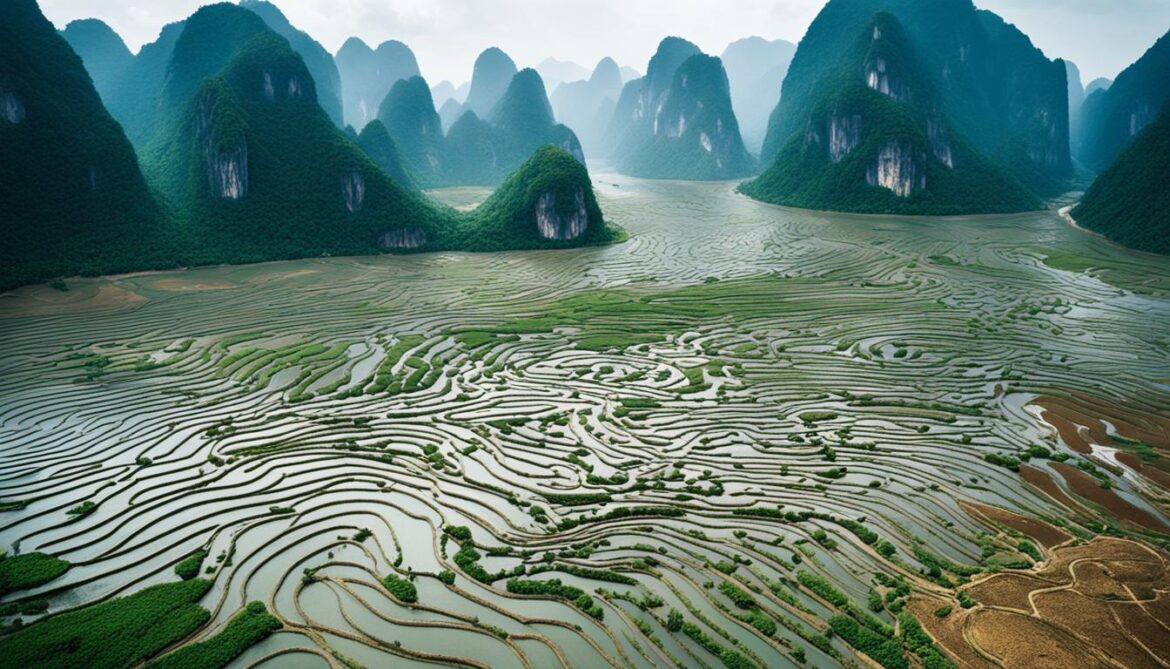
Through effective conservation measures, awareness campaigns, and sustainable practices, we can strive to reverse the trends of species extinction and ecological degradation in Vietnam. The preservation of biodiversity is essential not only for maintaining the integrity of ecosystems but also for safeguarding the livelihoods and well-being of both human and animal populations.
Conservation Efforts in Vietnam
Vietnam is committed to preserving its diverse and unique biodiversity through various conservation efforts. The country has established a comprehensive system of protected areas, including national parks, nature reserves, species/habitat conservation areas, and landscape protection areas. Currently, Vietnam is home to 128 protected areas, covering a total area of 2.5 million hectares or 7.6% of the country’s natural area.
These protected areas play a crucial role in safeguarding the valuable and endangered plants and animals that inhabit Vietnam’s diverse landscapes. National parks, such as Cuc Phuong National Park and Cat Tien National Park, provide a safe haven for numerous species, including rare primates, endemic birds, and endangered carnivores.
In addition to protected areas, Vietnam is actively engaged in in situ and ex situ conservation efforts. In situ conservation focuses on the preservation of species within their natural habitats, while ex situ conservation involves the conservation of species outside their native habitats, such as in zoos, botanical gardens, and seed banks.
Vietnam is also taking steps to promote sustainable use models, ensuring that local communities derive socio-economic benefits while minimizing the negative impact on ecosystems. By empowering communities to participate in conservation activities, Vietnam aims to achieve a balance between conservation and livelihoods.
Another important aspect of conservation in Vietnam is raising public awareness about the value and importance of biodiversity. Through educational programs, community engagement, and media campaigns, the government and various organizations strive to educate the public about the significance of protecting Vietnam’s natural heritage.
Vietnam’s conservation efforts are essential for preserving its rich biodiversity and ensuring the long-term survival of its unique ecosystems. By establishing and effectively managing protected areas, promoting sustainable practices, and raising awareness, Vietnam is making a significant contribution to global biodiversity conservation.
| **Protected Area** | **Type** | **Area (hectares)** |
|——————————-|—————–|————–|
| Cuc Phuong National Park | National Park | 22,200 |
| Ba Be National Park | National Park | 10,048 |
| Cat Tien National Park | National Park | 73,878 |
| Con Dao National Park | National Park | 20,000 |
| U Minh Thuong National Park | National Park | 8,038 |
| Yok Don National Park | National Park | 115,545 |
| Tam Dao National Park | National Park | 36,883 |
| Pu Mat National Park | National Park | 165,295 |
| Phong Nha-Ke Bang National Park | National Park | 123,326 |
Sources: Vietnam National Parks—Management Board
Conservation Challenges in Vietnam
Vietnam faces several conservation challenges in its efforts to protect biodiversity. These challenges arise from various factors, including deforestation, habitat loss, and fragmentation, illegal logging, unsustainable fishing practices, and the impacts of climate change.
Deforestation and Habitat Loss
Deforestation and habitat loss are major conservation challenges in Vietnam. These activities are driven by population growth, economic development, and unsustainable land use practices. Over the years, Vietnam has experienced alarming levels of deforestation, resulting in the loss of valuable forest habitats. Between 1943 and 1991, the country’s forest cover decreased from 67% to 29%. In just 48 years, the forests in the northern mountains saw a decline from 95% to 17% forest cover.
Deforestation and habitat loss have significant implications for biodiversity conservation. They lead to the fragmentation and degradation of remaining forests, isolating populations and reducing gene flow. This isolation makes species more vulnerable to extinction, as their breeding pools shrink, ultimately threatening their long-term survival.
Illegal Logging, Unsustainable Fishing, and Climate Change
In addition to deforestation and habitat loss, Vietnam also faces challenges posed by illegal logging, unsustainable fishing practices, and climate change.
Illegal logging is a detrimental activity that results in the destruction of forests and the loss of valuable tree species. It not only poses a threat to biodiversity but also has negative socio-economic impacts, depriving local communities of essential resources and ecosystem services.
Unsustainable fishing practices, such as overfishing, destructive fishing methods, and the targeting of vulnerable species, put pressure on marine ecosystems and threaten marine biodiversity.
Climate change exacerbates existing conservation challenges by altering habitats and disrupting ecosystems. Rising temperatures, changing rainfall patterns, and increased frequency of extreme weather events have the potential to negatively impact the distribution and abundance of species in Vietnam.
Addressing these conservation challenges requires a multi-faceted approach that combines efforts in policy-making, enforcement, community engagement, and sustainable resource management. Vietnam’s conservation initiatives aim to mitigate the threats posed by deforestation, habitat loss, illegal logging, unsustainable fishing practices, and climate change to protect the country’s rich biodiversity.
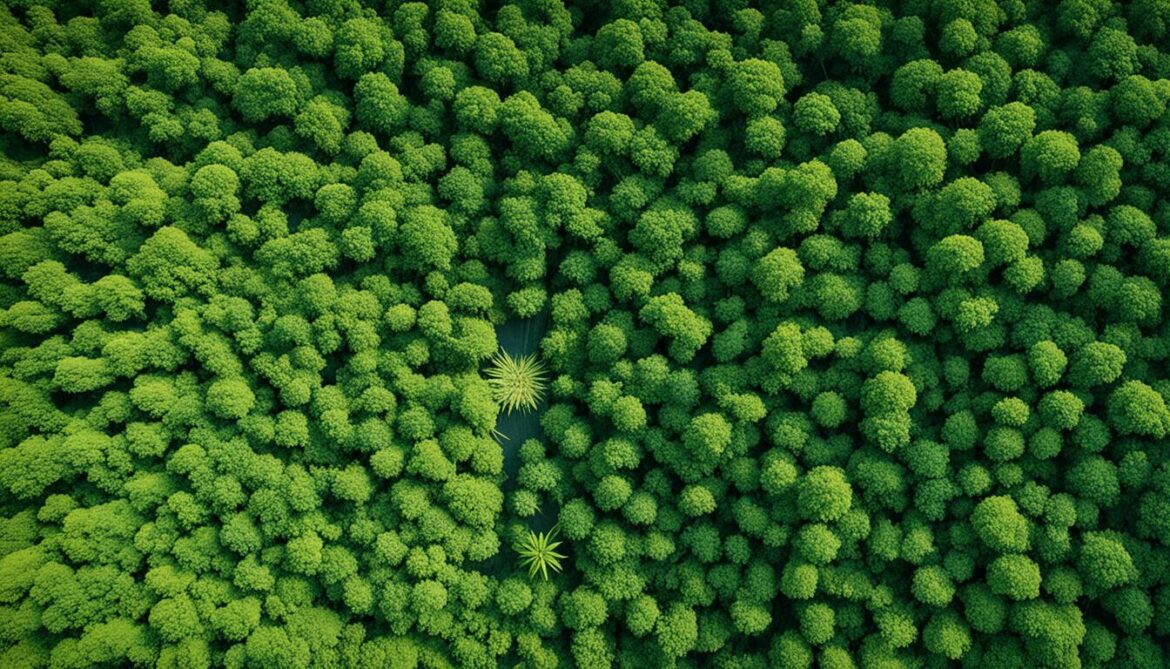
| Conservation Challenges in Vietnam | Description |
|---|---|
| Deforestation and Habitat Loss | Driven by population growth, economic development, and unsustainable land use practices |
| Illegal Logging | Poses a threat to forests and valuable tree species |
| Unsustainable Fishing Practices | Includes overfishing, destructive fishing methods, and targeting of vulnerable species |
| Climate Change | Alters habitats and disrupts ecosystems |
Biodiversity Research in Vietnam
Biodiversity research in Vietnam is continuously expanding, thanks to burgeoning scientific collaborations and advancements in technology. Scientists from Vietnam and around the world have been embarking on expeditions and research projects dedicated to documenting and studying the country’s rich biodiversity. Through these concerted efforts, numerous new species have been discovered, spanning across plants, mammals, and other organisms.
These scientific endeavors play a vital role in furthering our understanding of Vietnam’s unique ecosystems. By delving into the intricacies of the country’s biodiversity, researchers can uncover invaluable insights that inform conservation initiatives and the sustainable management of natural resources. The discoveries made through biodiversity research highlight the incredible diversity and ecological significance of Vietnam’s natural world.
“Biodiversity research not only sheds light on the undiscovered wonders of Vietnam’s ecosystems but also provides critical data for conservation efforts, allowing us to make informed decisions and implement effective strategies to protect our precious natural heritage.”
The Role of Scientific Advancements
Scientific advancements have aided biodiversity research in Vietnam by enabling researchers to employ innovative methodologies and technologies. From DNA sequencing to remote sensing, these cutting-edge tools provide scientists with unprecedented insights into the intricate workings of ecosystems and the biodiversity they support. By harnessing the power of these advancements, scientists can unravel the complex interactions between different species and gain valuable information regarding habitat connectivity and fragmentation.
New Species Discoveries in Vietnam
The biodiversity research conducted in Vietnam has led to the exciting discovery of numerous new species, showcasing the country’s status as a hotspot for unique and endemic lifeforms. For example, recent studies have unveiled new plant species, including captivating orchids and aromatic herbs, bringing attention to the remarkable botanical diversity of Vietnam.
In addition to plants, new mammal species have also been uncovered, shedding light on the hidden treasures within Vietnam’s forests. Among the remarkable discoveries were the Truong Son muntjac, a small deer species, the elusive saola, known as the Asian unicorn, and the giant muntjac, a large deer species with impressive antlers.
The exploration of Vietnam’s ecosystems continues to provide opportunities for scientific advancement and the revelation of previously unknown species. Each new discovery adds to the ever-growing body of knowledge about Vietnam’s biodiversity, reaffirming the country’s distinction as a haven of unique and undiscovered life.
| New Species Discoveries in Vietnam | Discovered Species |
|---|---|
| Plants | Orchids, aromatic herbs, and other botanical species |
| Mammals | Truong Son muntjac, saola, and giant muntjac |
| Others | Various reptiles, amphibians, and invertebrates |
The continuous exploration and scientific research in Vietnam open doors to new possibilities, ensuring that the hidden gems of the country’s biodiversity can be fully appreciated and protected for future generations.
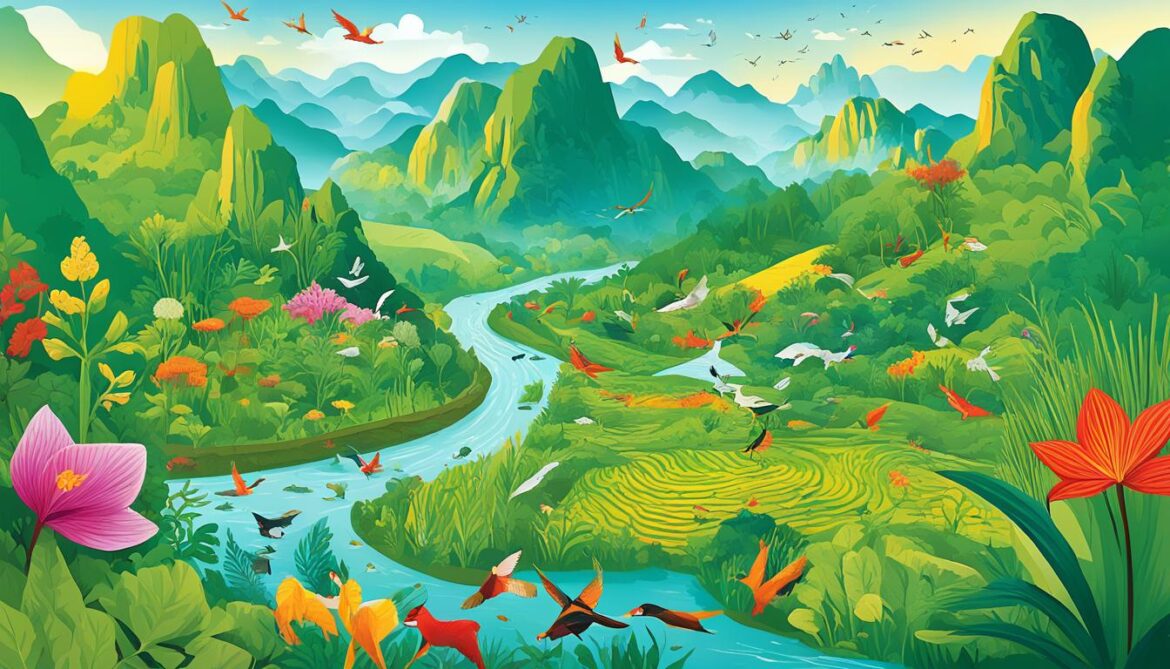
Importance of Biodiversity Preservation
Preserving biodiversity in Vietnam is crucial for maintaining ecosystem services and supporting sustainable livelihoods. Biodiversity provides valuable resources such as food security, healthcare, and cultural and economic opportunities for local communities, particularly those living in remote areas.
Ecosystem services, such as pollination, water purification, and climate regulation, are essential for maintaining the balance of natural ecosystems and ensuring the well-being of both humans and wildlife. For example, pollinators like bees and butterflies play a crucial role in fertilizing plants, which is necessary for the production of fruits, seeds, and crops.
Biodiversity preservation also contributes to sustainable livelihoods by providing economic opportunities through ecotourism and sustainable resource management. The unique flora and fauna of Vietnam attract tourists from around the world, creating jobs and income for local communities. Additionally, the sustainable use of natural resources, such as responsibly harvesting timber or non-timber forest products, can provide a source of income for communities while ensuring the long-term viability of these resources.
“Preserving biodiversity is not just about saving individual species; it is about preserving the intricate web of life that sustains us all.”
– Jane Goodall
Biodiversity preservation is vital for the long-term resilience and sustainability of Vietnam’s natural environment. By protecting and conserving diverse ecosystems, we can better adapt to environmental changes, mitigate the impacts of climate change, and safeguard the delicate balance of nature.

Ecosystem Services Provided by Biodiversity
- Pollination: Many plant species rely on animal pollinators to reproduce and produce fruits, seeds, and crops.
- Water Purification: Wetlands and forests act as natural filtration systems, helping to purify water sources and maintain water quality.
- Climate Regulation: Forests act as carbon sinks, absorbing carbon dioxide from the atmosphere and helping to regulate climate patterns.
- Nutrient Cycling: Biodiverse ecosystems play a crucial role in recycling and cycling nutrients, ensuring the availability of essential elements for plant growth and productivity.
- Soil Conservation: Plant and animal biodiversity help prevent soil erosion, maintain soil fertility, and improve soil structure.
Sustainable Livelihoods and Biodiversity
- Ecotourism: Biodiversity hotspots and protected areas attract tourists, generating income and creating job opportunities for local communities.
- Sustainable Resource Management: Responsible harvesting of timber, non-timber forest products, and fisheries can provide sustainable livelihoods while ensuring the long-term viability of these resources.
- Traditional Knowledge and Cultural Heritage: Biodiversity preservation promotes the preservation of traditional knowledge systems and cultural practices associated with the natural environment.
- Food Security: Biodiversity provides a variety of food sources, including wild edibles, traditional crops, and locally adapted agricultural varieties. This diversity enhances resilience to changing conditions and improves overall food security.
By recognizing the importance of biodiversity preservation and implementing sustainable practices, we can protect the natural heritage of Vietnam for future generations, maintain the provision of essential ecosystem services, and ensure the well-being of both human and wildlife populations.
Biodiversity Conservation Successes in Vietnam
Despite the challenges, Vietnam has achieved notable successes in biodiversity conservation. The establishment and effective management of protected areas have contributed to the recovery of several species populations and the preservation of important habitats.
One key success story is the Cat Tien National Park, which spans an area of 720 square kilometers and is home to a diverse range of plant and animal species. Through sound protected area management practices, the park has witnessed the recovery of the Javan rhinoceros population, which was once on the brink of extinction. Efforts to combat illegal poaching and habitat degradation have been instrumental in the species’ recovery, highlighting the importance of protected area management in safeguarding vulnerable species.
“The recovery of the Javan rhinoceros population in Cat Tien National Park is a testament to the effectiveness of protected area management in Vietnam. It demonstrates that with strong conservation measures in place, species can rebound from the brink of extinction.” – Dr. Nguyen Thi Lan, Wildlife Conservation Society Vietnam.
In addition to protecting endangered species, Vietnam has also made significant progress in habitat restoration. The U Minh Thuong National Park, for example, has successfully rehabilitated wetland areas that were once heavily degraded due to peat extraction. Through the implementation of restoration techniques such as reforestation and the reintroduction of native species, the park has been able to restore vital habitats for a wide range of plant and animal species.
Collaboration between Vietnam and international partners has been crucial to the success of biodiversity conservation efforts. International organizations such as WWF and Conservation International have provided technical expertise, funding, and capacity building support. This collaboration has facilitated knowledge sharing and the implementation of best practices in conservation initiatives.
Overall, these conservation successes in Vietnam serve as a testament to the importance of continuous efforts in protecting and preserving biodiversity. They demonstrate that with effective protected area management, habitat restoration, and international collaboration, positive outcomes can be achieved in safeguarding Vietnam’s rich natural heritage.
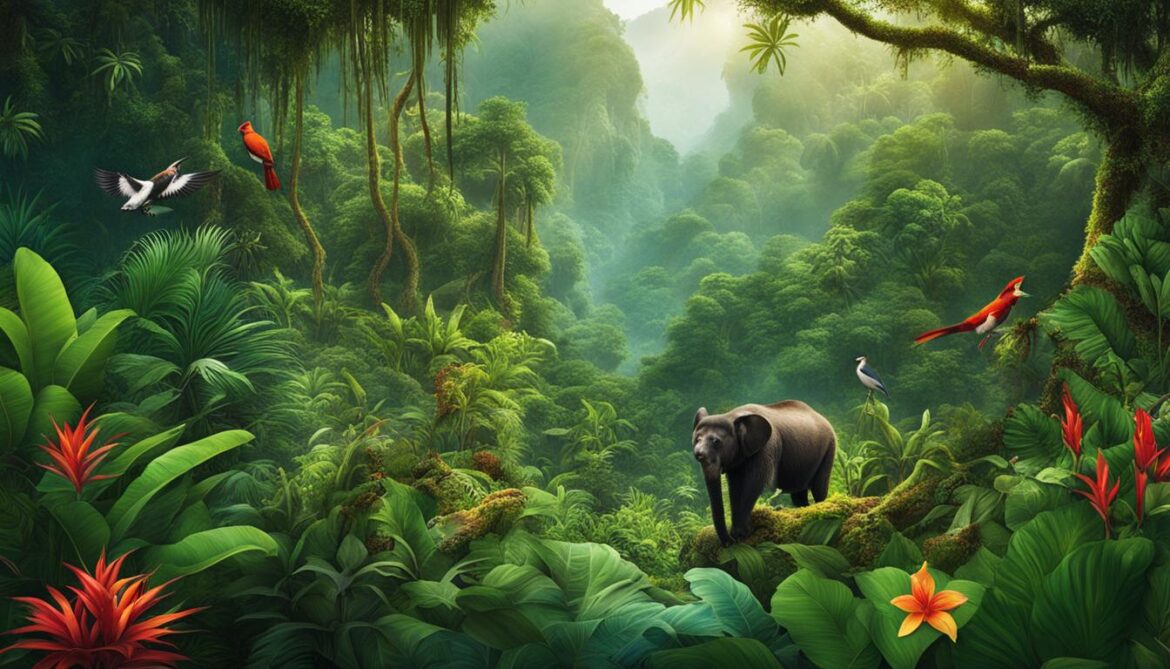
Biodiversity Conservation Successes in Vietnam
| Protected Area | Success |
|---|---|
| Cat Tien National Park | Recovery of Javan rhinoceros population |
| U Minh Thuong National Park | Habitat restoration and rehabilitation |
| Ba Be National Park | Conservation of endemic fish species |
| Con Dao National Park | Preservation of endangered marine species |
Conclusion
Vietnam’s biodiversity is a crucial and treasured natural heritage that is currently facing significant threats. Habitat loss, over-hunting, and the illegal wildlife trade are endangering the diverse flora and fauna of the country. However, proactive conservation efforts are underway in Vietnam to safeguard this invaluable biodiversity.
Biodiversity research and collaboration between scientists and conservationists play a vital role in understanding and preserving Vietnam’s unique ecosystems. These efforts have led to the discovery of new species and the implementation of effective conservation strategies. It is essential to continue investing in scientific exploration and knowledge sharing to ensure the success of conservation initiatives.
Preserving Vietnam’s biodiversity is not only important for the protection of endangered species but also for maintaining ecosystem services and supporting sustainable livelihoods. The conservation of biodiversity ensures the balance of natural ecosystems, which in turn benefits both humans and wildlife. By prioritizing the preservation of Vietnam’s biodiversity, we can secure the long-term health and resilience of the country’s natural environment.




